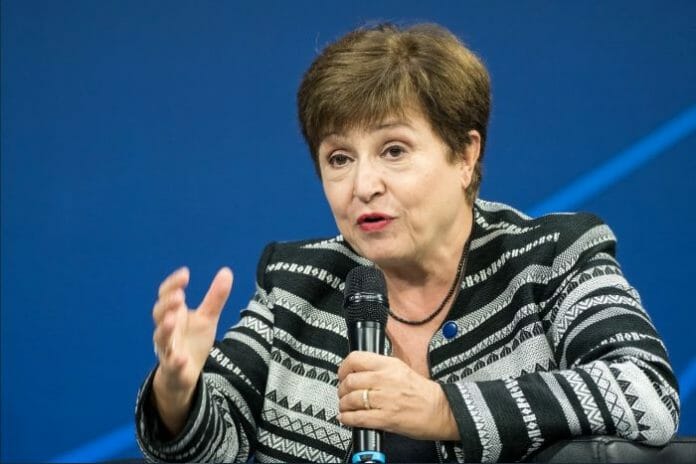The International Monetary Fund expects global economic growth to dip below 3 percent in 2023 and to remain around 3 percent for the next five years, IMF Managing Director Kristalina Georgieva said.
That is the global lender’s lowest medium-term growth forecast since 1990, and well below the average growth of 3.8 percent seen in the past two decades.
Georgieva said strong and coordinated monetary and fiscal policy actions to respond to the COVID-19 pandemic and Russia’s invasion of Ukraine had prevented a much worse outcome in recent years, but growth prospects remained weak in both the near- and medium-term given persistently high inflation.
“Despite surprisingly resilient labor markets and consumer spending in most advanced economies, and the uplift from China’s reopening, we expect the world economy to grow less than 3 percent in 2023,” she said in prepared remarks ahead of next week’s spring meetings of the IMF and World Bank.
“With rising geopolitical tensions and still-high inflation, a robust recovery remains elusive. This harms the prospects of everyone, especially for the most vulnerable people and countries,” she said at an event hosted by Meridian House and Politico.
Growth dropped by almost half to 3.4 percent in 2022 following the shock of Russia’s war in Ukraine from the 6.1 percent rebound seen in 2021.
She said India and China would account for half of global growth in 2023, but about 90 percent of advanced economies would see a decline in their growth rate this year.
Low-income countries, saddled by higher borrowing costs and weakening demand for their exports, would see per-capita income growth staying below that of emerging economies, she said.
The IMF chief called on central banks to stay the course in the fight against inflation as long as financial pressures remained limited but to address financial stability risks when they emerge through appropriate provision of liquidity.
Recent bank failures in Switzerland and the United States had exposed risk management failures at specific banks and supervisory lapses.
“The key is to carefully monitor risks in banks and non-bank financial institutions, as well as weaknesses in sectors such as commercial real estate,” she added. “Now is not the time for complacency.”
While policymakers had responded swiftly to recent stress in the sector, concerns remained about potential “hidden” vulnerabilities at banks and nonbanks, she said.
To boost the prospects for growth and productivity, Georgieva called for major step changes, including an estimated $1 trillion a year in spending on renewable energy, and moves to avoid the fragmentation of the global economy, which could shave as much as 7 percent off the global gross domestic product.
Technological decoupling could see some countries suffer losses of up to 12 percent of GDP, she said.
Source: Reuters









